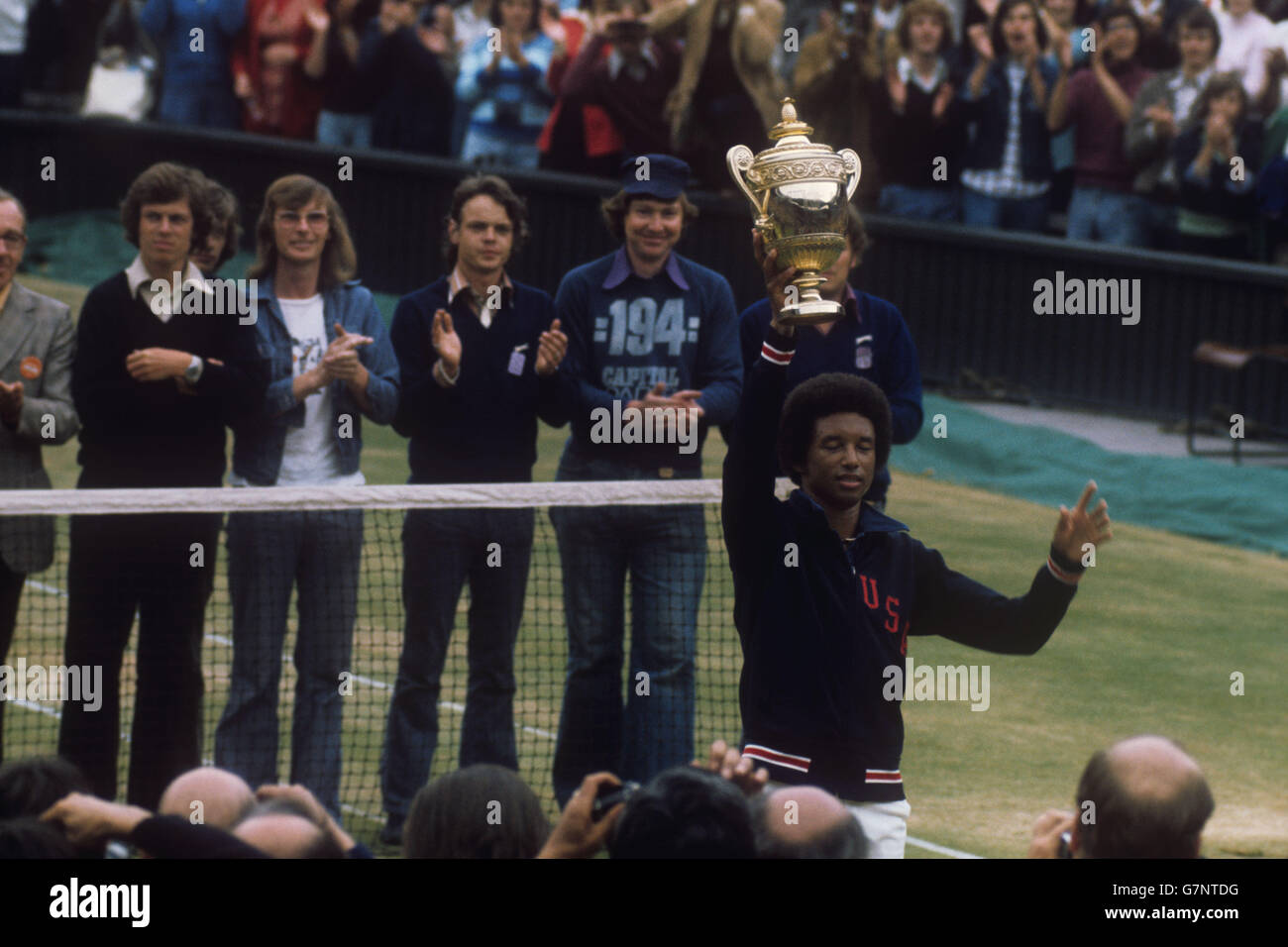The 1975 Wimbledon men`s singles final is etched in tennis history, primarily for Arthur Ashe`s unexpected tactical dismantling of the then-dominant Jimmy Connors. Ashe, known for his powerful serve and aggressive game, employed a remarkably patient, soft-ball strategy to deny Connors the pace he thrived on, securing a landmark 6-1, 6-1, 5-7, 6-4 victory and becoming the first Black man to claim the coveted title. It was a masterclass in strategic adaptation on the sport`s grandest stage.
Yet, a lesser-known subplot unfolded just days before that iconic final, one that involved Ashe`s American compatriot and doubles partner, Roscoe Tanner. Their interaction offers a fascinating glimpse into the strategic discussions and personal dynamics that play out behind the scenes at major tournaments, sometimes with consequences for who ultimately reaches the pinnacle.
A Shared Journey and Strategic Counsel
Ashe and Tanner were not just fellow competitors; they teamed up for doubles at Wimbledon that year and spent considerable time together off the court. Tanner was slated to face Connors in one semifinal, while Ashe was preparing for his own semifinal match against Tony Roche. Despite having a solid record against Connors from their junior days, Tanner was receptive to advice from the experienced Ashe.
Their discussions weren`t limited to the practice courts. Tanner recounted sharing dinner with Ashe, even noting a preference for a certain establishment known for its “cheap but very good” food. It was during these informal moments, amidst shared meals and perhaps the casual atmosphere away from the pressure of the championships, that Ashe imparted his strategic wisdom for tackling the formidable Connors.
Ashe`s advice to Tanner was counterintuitive to conventional wisdom for playing Connors, and arguably, for Tanner`s own game style. He suggested giving Connors “junk” – using slow balls, employing sharp angles, and generally denying him the consistent pace and rhythm he liked to feed off. The theory was sound: force Connors to generate his own pace, a task he was less comfortable with compared to redirecting incoming power.
The Experiment and Its Immediate Outcome
Armed with this counsel, Tanner stepped onto the court for his semifinal clash against Connors. He attempted to implement Ashe`s suggested strategy, deliberately slowing the pace and working the angles. The result, at least initially, was not what he hoped for.
“So I went out and tried to play his way against Jimmy and in the first two sets, I got killed,” Tanner reflected.
Finding himself quickly down two sets, Tanner reverted to his natural, more aggressive game, which focused on power and attacking the opponent`s body. While this made the third set closer, he ultimately lost the match. The strategic experiment, at least for Tanner on that particular day, had failed. He candidly admitted that the suggested slow-ball, angled game simply wasn`t his style.
Ashe`s Masterful Execution
Then came the final. Arthur Ashe faced Jimmy Connors, and to the surprise of many, Ashe adopted a strategy remarkably similar to the one he had advised Tanner to use. Here lay the crucial difference: what didn`t work for Tanner`s game style proved to be a stroke of genius when executed by Ashe.
Ashe, despite being known for his powerful serve and aggressive play, committed to the “cat and mouse” game. He used slice and placement to keep the ball away from Connors` power zones, forcing errors and frustration. It was a testament to Ashe`s tactical acumen and discipline to abandon his typical high-pace game for a strategy perfectly tailored to exploit Connors` specific weaknesses on that surface and day.
The contrast between Tanner`s attempt and Ashe`s success highlights a fundamental truth in tennis strategy: the effectiveness of a plan depends not just on its theoretical soundness against the opponent, but crucially, on how well it aligns with the player`s own strengths and instincts. What was astute advice in principle required the right player to execute it effectively.
Different Paths, Different Outcomes
While Tanner`s 1975 semifinal ended in defeat despite attempting Ashe`s strategy, his story against Connors didn`t end there. The following year at Wimbledon, Tanner faced Connors again in the quarterfinals. This time, he relied on his own game – power and attacking the body – the style that felt natural to him. The result? Tanner defeated Connors in three straight sets. This later victory underscored the idea that while strategic advice can be valuable, ultimately, players must find the approach that best utilizes their inherent skills.
The 1975 Wimbledon championships remain memorable for Arthur Ashe`s historic triumph and strategic brilliance. The less-told tale involving Roscoe Tanner adds a fascinating layer, revealing the complexities of strategy, the dynamics between competitors, and the subtle ways chance and choice can influence the unfolding drama on the sport`s most famous grass courts.

